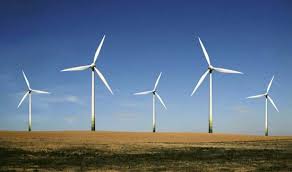Ever since it became clear earlier in 2013 that the conservative coalition parties were likely to gain power at the next federal poll – which they did – the renewable energy industry in Australia has pretty much ground to a halt.
The reason for this? The Coalition’s insistence from early last year that it hold another review of the renewable energy target, even though the Climate Change Authority had completed one just months earlier.
The problem was that the CCA did not give the answer the Coalition and its business supporters wanted. Not only was the renewable energy target weakening the revenues, profits and business models of the incumbent generators, the Coalition was being fed the line that RET was much more expensive than being let on.
The new Coalition government has since tried to dissolve the CCA, and the government’s inner core is being advised by climate change hard-liners and renewable-haters who repeat the theme that renewables are expensive. Prime Minister Tony Abbott most certainly thinks so.
This week, the Australian Chamber and Commerce and Industry was at it again. Its acting chief economist Burchell Wilson, in a media statement accompanying its submission to the energy white paper, said this:
“On top of the carbon tax, industry has also had to bear the burden of a dramatically expanded Renewable Energy Target (RET) that is currently imposing a $1.5bn cost on the economy that is set to rise to $5bn by 2020.”
Interestingly, the $5 billion figure is not included – as far as we could see – in its actual submission. That’s probably because it’s nonsense, and wouldn’t stand much scrutiny from an informed audience, although it might just get through a gullible and ill-informed and time-poor mass media.
The Clean Energy Council has already taken issue with the claim. But where did it come from, and why is it still parlayed in conservative and anti-wind and anti-solar circles?
The true origin is hard to find, but it does pop up in a document prepared by the Institute of Public Affairs, Abbott’s favourite think tank, in a submission (page 7) to a Senate inquiry into clean energy amendments in 2012. It’s based around this table below. It is so wrong it is difficult to know where to start.
“Without the carbon tax,” the IPA writes, “a subsidy of around $5 billion per year would be required in order to achieve the 41,000 GWh of large scale renewable energy and the 4000 GWh of small scale supplies. These figures are based on large scale wind requiring a subsidy of $88 per MWh based on its costs of $120 per MWh plus some additional back-up costs, compared with coal at less than $40 per MWh. Added to this is the even more expensive solar with a cost of perhaps $360 per MWh2. All this adds around 5 per cent to the retail cost of electricity to households and much more than this to the business users.”
For a start, the IPA appears to have confused what it thinks is the cost of rooftop solar with the subsidy available. Not only is the cost of rooftop solar about half what it thinks it is (and notice is has no technology cost decline out to 2020) but the subsidy is capped at a maximum $40/MWh under the RET scheme. In fact, the price has been trading well below that, even though some regulators (with the notable exception of the ACT) have allowed retailers to pass on the full cost anyway, and pocket the profits.
So on the small scale scheme, the IPA numbers are out by a factor of 10. Oops.
On the large scale target, the IPA is also wrong. It assumes a large scale renewable energy certificate (LREC) price of $88/MWh by 2020 – on the basis that there is no carbon price, and wind power costs around $120/MWh.
The problem is that it applies that $88/MWh figure even to the 2012, 2013, and 2014 estimates of the costs, and to other years, when the LRECs have been trading at less than half that price.
And anyway, by 2020, the LREC is unlikely to get to $88/MWh. Many wind power plants in Australia can and will be built at a price of a lot less than $100/MWh. Snowtown 2 is an example, and the Hornsdale wind project held by Investec is another example. Even the government’s official economic forecaster, the Bureau of Resource and Energy Economics, accepts this. More expensive, or tier 2, wind farms, are likely to be substituted by solar PV.
All the industry needs to build this plant is certainty. The only way the LREC price would get to $88/MWh is because the RET is delayed so long, and utilities stall so long on power purchase agreements, that they decide to pay the penalty price and not commission new wind farms.
That would be an astonishing situation and one brought around entirely by their own lobbying. Extraordinarily, it now seems to be the basis of the submissions by the likes of the Business Council of Australia and EnergyAustralia to dilute the RET.
The $5 billion number has used by the likes of ACCI, and other anti-renewable publications that appear to have had an extraordinary influence on government policy. It was invented by Alan Moran, IPA’s head of deregulation and one of the people mooted to sit on the panel to review the RET. It seems less likely now that Moran will be on that panel, but it will be housed within Abbott’s office, and within ideological reach of those who don’t accept the science, or basic economic data.









